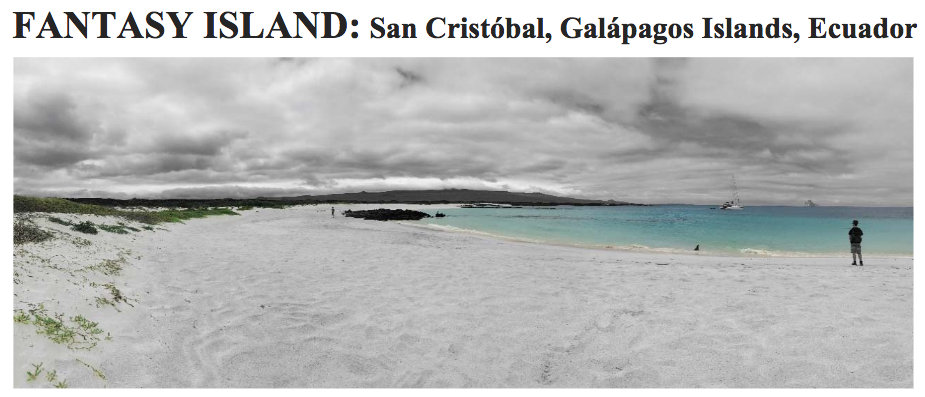FANTASY ISLAND: Studio Course Final Review
Dean’s Alley, Meyerson Hall
210 S 34th St
Philadelphia, PA 19104

Join PPEH Research and Teaching Seed Fund recipient Karen M'Closkey for the final review of her landscape architecture students' projects addressing the ecological, educational and economic challenges in San Cristobal Island in the Galapagos, Ecuador.
Studio in brief
Islands hold a special place in the imagination, perhaps none more so than the Galápagos Islands, a place long considered a “natural laboratory” and “secular pilgrimage site” ever since it provided the locus for Charles Darwin to develop his theory of evolution by natural selection. Named a UNESCO World Heritage site in 1979, the islands are home to hundreds of endemic species. Ninety-seven percent of the land is conserved by the Galápagos National Park (est. 1959), and another 50,000 square miles are protected in the Galápagos Marine Reserve (est. 1998). No one, including residents, can enter these areas without a park ranger escort and thus many residents do not spend time in this “97%.” In an attempt to protect the biodiversity of the nature reserve, immigration was banned in 1998, yet population continues to grow from births as well as migration of mainland Ecuadorians in search of jobs. Tourism, the archipelago’s biggest industry, is threatening the very nature it was meant to preserve.
The Islands provide a concentrated place to consider the tension between biodiversity conservation and economics rooted in the cross-section between the global discourse of “eco-tourism” and the local livelihoods that have been left out of conversations about prohibitions on island activities. By rooting the problems in the 3% unprotected area, a binary between nature and society— conservation and people—is reinforced; it is a line that ignores the permeability between these spheres. In this studio students were asked to operate on these lines of demarcation, and locate conceptual, material, and programmatic areas of permeability with a focus on Puerto Baquerizo Moreno on San Cristóbal Island. The semester included a studio visit to the island, partially funded by the PPEH seed fund, where students met with local leaders and community members to assist in the development of projects that contend with the ecological, educational, and economic challenges in their communities. Studio partners included Galápagos naturalist guides and faculty from Penn’s Laboratory for Understanding Science.
